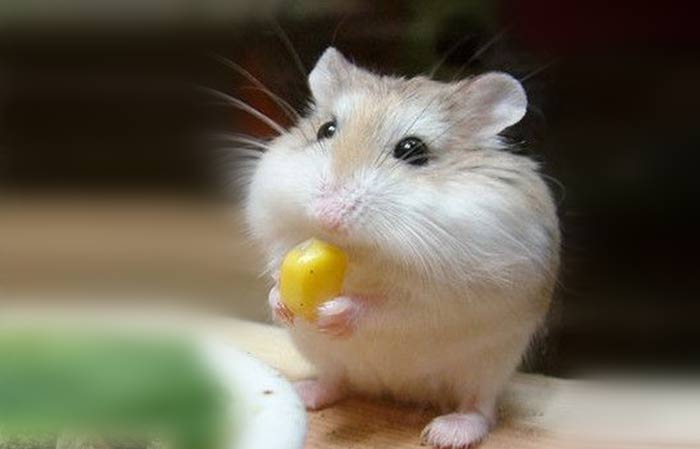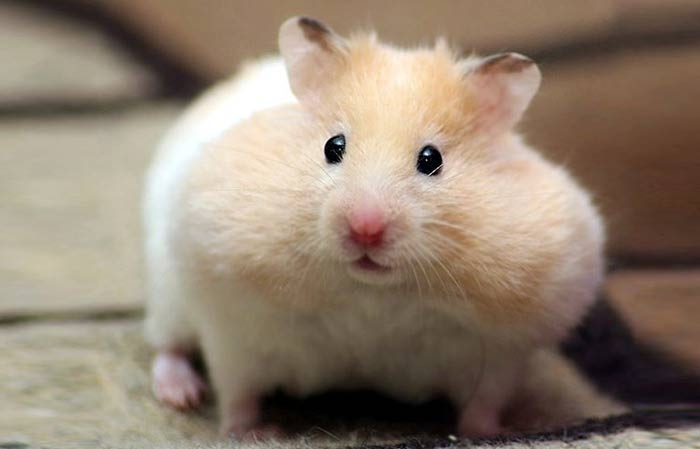Hamsters have one of the shortest lifespans thanks to their fast-growing body and swift maturity. From its lifecycle, once a pup (baby hamster) is born, it remains in the gestational state for only 6 to 8 weeks and in less than a year, it’s an adult ready to reproduce. This is why hamsters only last an average of two to three years.
Their life expectancy is greatly affected by various factors, including the if it’s captured or in the wild. Multiple other factors are discussed below plus more interesting facts about the lifespan of hamsters.
A Hamster’s Lifespan
It is said that a two-year-old hamster equates to a 70-year-old human being.
Their rate of growth is unbelievable, whereas a female hamster aged about six weeks old is considered mature and ready to mate.
Either way, most fade away in about 2.5 years on average with the oldest reaching four years old as recorded in the Guinness world record.
Various factors could have come into play favoring such a long lifespan, as you will learn in the following sections.
Factors that determine how long Hamsters live
From this list below, find reasons your pet hamster may live a long or short life, some are controllable elements, while some aren’t.
Diet
The food it eats significantly affects its health. Similar to human beings, hamsters required to eat a balanced diet filled with proteins, fiber, omega 3 fatty acids, fruits, and vegetables. You could also get some snacks from the pet store and add them to their cage so they can feed on them whenever they want.

Also note, not all leafy greens are advised for the hamster, use simple ones like broccoli and parsley. Fruits stick to apple, pears, and carrots since they have a crunch and best fir the recent to gnaw on.
Avoid lettuce and leeks, raw potatoes, onions and garlic, and also oranges, they have high acidity plus they could give the hamster diabetes.
Physical Exercise
Your hamster needs to remains strong and active, especially in its first and second year before the old age starts to kick in. Not only does doing exercise keep them active, but it also relieves boredom, plus it could be an excellent bonding time for you and your pet.
Indulge your hamster with wheel and exercise gaming balls regularly to keep it on its toes.
Environment
It’s not enough that you call the hamster your pet, it needs to be cared for and protected from the harsh world called the wild. There are several things you can do to ensure the hamster is well taken care of and that the environment is conducive for its growth.
Read the section below on the quality of care your hamster needs that offers the best environment for your hamster.
Quality of Care
There are several things you should keep in mind when planning to pet a hamster, that’s if you want it to live its longest possible life.
Because the hamster is really needy and nippy, you will have to take these features into consideration to ensure the quality of care offers the perfect environment for its growth.
Cage Metrics
The hamster is a small animal and you won’t need much space for it. But it’s always best to get a bigger fit from the standard 15 inches long by 12 inches high, to allow the pet space to play and simply maneuver around the cage. Proof the cage so it doesn’t go out in the wild which then changes its entire environment.
Bedding
No, you don’t need to have some special bedsheets for your hamster, in fact, the best type of bedding you can offer your hamster is one made of cellulose or plant fibers.
Wood shavings aren’t the isn’t chosen because of tiny insects and so its corn cobs and scented bedding since they contain chemical substances harmful to the respiratory tract of your hamster.
Other things you can keep in mind is regularly cleaning out its habitat so the environment is clean, bathing the hamster, and regularly checking on its health status.
Hamster Species as a Factor
Finally, the breed factor. There have been many theories that try to explain the effect of genes on the lifespan of a hamster.

Some claim the smaller the hamster the shorter its lifespans. Others also claim, their origin plays a significant role in how long or short the hamster lives. But science argues the species of the hamster.
Below are the common types of hamsters and their respective average lifespans.
- European Hamster – also referred to as the Cricetus cricetus is a wild hamster that can live up to 8 years of age, provided it stays away from its common predators. It’s also huge in size, approximately twice the size of a Syrian.
- Syrian Hamster – the most common hamster among all other species. Its average lifespan is two to three years old. It only grows to about seven inches long. They live longer in captivity than in the wild.
- Roborovski Hamster – it has an average lifespans of 3 to 3.5 years. They are very small, yet speedy and energetic. This dwarf hamster is similarly very nippy and lives longer once carefully taken care of.
- Campbell’s Dwarf Hamster – another small hamster that lives for only two years. It only grows to about four inches long.
- Chinese Hamster – with the shortest lifespan, this Chinese hamster only lives for 1.5 to 2 years, very lucky ones see half of the second year. They are mouse-like and passionate. Survives best under shelter.
- Winter White Russian Dwarf Hamster – this last species also has a lifespan of 1.5 to two years. They can survive equally in the wild as in captivity. Their white fur allows for warmth and hibernation.
Other Factors
There are other things that could affect how long or short your hamster lives. For example;
Illnesses and ailments
Your hamster can easily get infected causing it to die early, especially if poorly taken care of at that time.
Species Relations
There are numerous kinds of hamster species available to pets. Before you decide to keep one or more, entire you have the right facts about placing them together. This is because the Syrian breed is rather violent and could affect the life of the other hamster once placed in the same cage.
Seeing that some don’t go well in pairs, you should be keen to ensure one doesn’t die early due to suffocation, violent fights, or an inhospitable environment.






